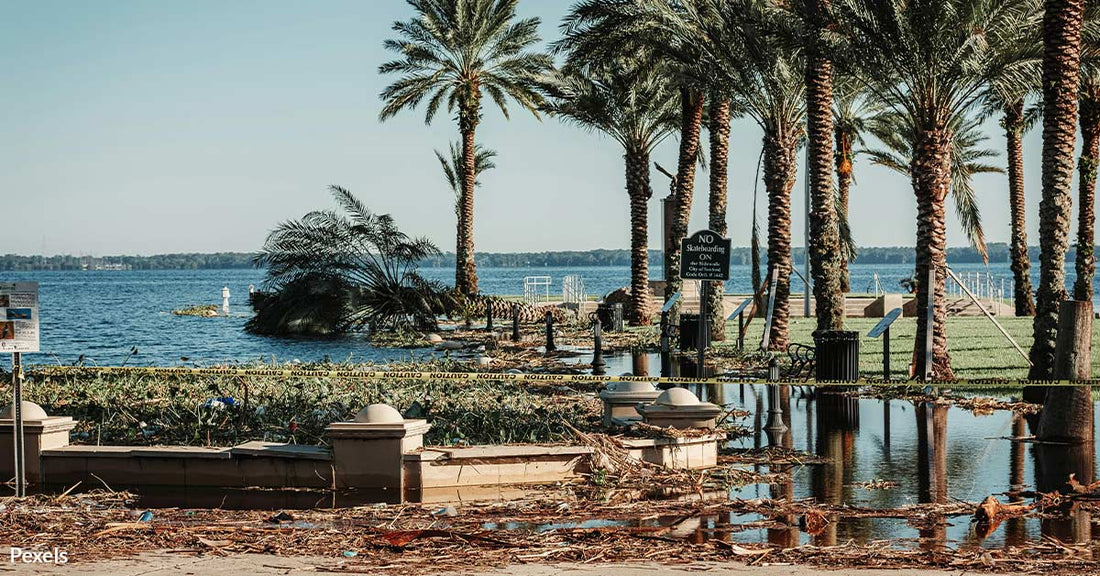Hurricanes Are Growing Deadlier as Climate Change Fuels Their Strength
Matthew Russell
Record-breaking ocean temperatures are creating hurricanes that are more powerful, faster, and harder to predict. Research from Climate Central shows that human-caused climate change intensified every hurricane in the Atlantic in 2024, raising maximum wind speeds by 9 to 28 miles per hour.
This pattern of intensification is becoming the new norm, with severe consequences for coastal communities.

Warmer Oceans, Stronger Storms
The link between warming oceans and stronger hurricanes is direct and undeniable. Oceans absorb over 90% of the excess heat caused by global warming, fueling storm systems with more energy. According to Climate Central, ocean surface temperatures in hurricane tracks were as much as 2.5°F warmer in 2024, a scenario made 800 times more likely due to climate change. These elevated temperatures turned storms like Hurricane Milton into Category 5 powerhouses, a status they would not have achieved in a cooler world, Climate Central reports.
“Hurricanes are nature’s way of redistributing heat,” said Dr. Daniel Gilford, a climate scientist with Climate Central, told Science News. “The extra heat from climate change is making them stronger and more destructive.”

The Cost of Intensity
Even small increases in wind speeds can lead to exponential increases in damage. A shift from a Category 3 to a Category 4 storm on the Saffir-Simpson scale quadruples the potential for destruction. In 2024 alone, nine out of eleven Atlantic hurricanes underwent rapid intensification, with Hurricane Milton setting a record by gaining 95 mph in just 24 hours, as reported by CNN. Such rapid changes make storms harder to predict and prepare for, leaving communities vulnerable.
John Morales, a hurricane specialist, explained in an interview with WRAL that rapid intensification cycles are becoming more common and dangerous.
“A greater proportion of storms are reaching Category 3, 4, or 5,” he said. “These are the ones causing most of the destruction.”

Beyond Wind: Cascading Effects
The intensification of hurricanes also brings more severe storm surges, heavier rainfall, and prolonged impacts. For example, Hurricane Rafael, which reached Category 3, brought devastating floods to Cuba. Science News researchers noted that without climate change, this storm likely would have peaked as a tropical storm.
Dr. Friederike Otto of World Weather Attribution highlighted that even well-prepared communities struggle to respond to these increasingly extreme events.
“We’re facing challenges on an unprecedented scale,” she told WRAL. The escalating damage underscores the urgent need for improved adaptation measures.

What Can Be Done?
Mitigating these risks requires both reducing greenhouse gas emissions and improving infrastructure resilience. Scientists agree that continuing to burn fossil fuels at current rates will make hurricanes even more destructive. However, reducing emissions could slow the warming trend, giving ecosystems and communities more time to adapt.
“The hurricanes we see today are largely a result of choices made decades ago,” said Dr. Gilford in Science News. Future storms depend on the actions we take now.

Preparing for the Future
As the climate crisis deepens, the question is no longer whether hurricanes will become stronger but how much stronger they will get. Investments in renewable energy, coastal defenses, and disaster preparedness will be key to protecting lives and property.
Communities along the Atlantic must prepare for storms that are not only more powerful but also increasingly unpredictable. The intensification of hurricanes is a clear signal: the time to act on climate change is now.

